Creating a chic and cozy environment for infants in daycare settings is more than just about aesthetics—it’s about fostering a nurturing atmosphere that promotes growth and exploration.
Gone are the days of bland, uninspiring spaces. Today’s infant rooms are bursting with color, creativity, and modern designs that not only captivate little ones but also provide comfort and functionality for caregivers.
From whimsical wall art to innovative play areas, the right decor can make a world of difference. In this listicle, we’ll showcase 20 inspiring ideas that infuse modern style into infant daycare settings. Each idea reflects current design trends while ensuring that safety and comfort are never compromised. Get ready to transform those daycare spaces into chic havens for the littlest of ones!
Playful Pastels and Nature Themes

Imagine a room where soft pastels meet vibrant nature motifs, creating a soothing yet playful atmosphere for infants. One stunning example showcases white cribs nestled against a backdrop of pastel green grass and colorful butterflies adorning the walls.
This theme is visually calming and engages babies with bright colors and familiar shapes. Here are some tips for incorporating this style:
- Use removable wall decals: They are perfect for adding character without commitment.
- Choose nature-inspired toys: Soft plush animals or wooden toys can enhance the theme.
- Incorporate natural materials: Consider wooden cribs and organic cotton bedding for a cohesive look.
The gentle pastels promote relaxation, while the playful elements stimulate curiosity. It’s a delightful balance that both infants and caregivers will appreciate.
Colorful Play Zones

Transforming an infant room into a vibrant play zone can significantly enhance the daily experience for babies. A colorful setup featuring bright rugs, plush play mats, and interactive toys creates an inviting space that encourages exploration.
One image shows a room that combines bold primary colors with soft textures, making it not only fun but also safe for little explorers.
- Layer textures: Use different types of soft mats and cushions to create a cozy environment.
- Designate play areas: Clearly defined zones help babies understand where they can play freely.
- Include sensory items: Rattles, textured toys, and mirrors can stimulate sensory development.
A vibrant play zone not only keeps infants engaged but also fosters essential developmental skills in a fun, safe way.
Starry Nights and Dreamy Vibes

Creating a dreamy atmosphere for infants can be as simple as incorporating celestial themes. One beautiful example features cribs surrounded by starry murals and soft, cloud-like decorations.
The calming blue tones combined with whimsical stars can make bedtime a peaceful experience:
- Opt for soft lighting: Gentle night lights can create a comforting ambiance.
- Use calming colors: Blues and soft yellows promote a serene environment for sleep.
- Incorporate star-themed decor: Wall stickers or mobiles can add a playful touch to the theme.
This dreamy vibe not only soothes babies to sleep but also offers a visually enchanting experience that caregivers will love.
Functional yet Stylish Storage Solutions

In any infant room, organization is key. Stylish storage solutions can blend functionality with aesthetics, ensuring that toys and supplies are easily accessible yet neatly tucked away.
One room showcases creatively designed shelves that are not only practical but also serve as decorative elements:
- Use colorful bins: These can add a pop of color while keeping items organized.
- Incorporate open shelving: This allows easy access to toys and promotes independence for older infants.
- Label everything: Use fun, colorful labels to make it easy for caregivers to find what they need.
A well-organized space promotes a sense of calm and makes the environment more inviting for both babies and caregivers.
Whimsical Wall Art

Wall art can truly set the tone for an infant room. Opting for whimsical, playful designs can spark imagination and creativity in little ones. A mural featuring cheerful animals or inspiring quotes can engage babies visually.
In one image, a colorful mural of animals in a forest creates a lively backdrop:
- Choose removable wallpaper: This allows for easy updates as trends change.
- Incorporate family photos: Personal touches can make the space feel inviting.
- Use art that reflects diversity: This can foster inclusivity from an early age.
Whimsical wall art not only beautifies the space but also stimulates visual and cognitive development.
Eco-Friendly Decor

Sustainable and eco-friendly decor is becoming increasingly popular in daycare settings. Utilizing natural materials and non-toxic paints ensures a safe environment for little ones while being kind to the planet.
One room beautifully showcases wooden cribs and organic cotton textiles:
- Select sustainable materials: Look for furniture made from reclaimed wood or bamboo.
- Use non-toxic paints: This is crucial for both safety and environmental reasons.
- Incorporate plants: They can improve air quality while adding a natural touch.
Eco-friendly decor is a trend that reflects a growing awareness of health and environmental impacts, making it a smart choice for modern daycare settings.
Minimalist Designs

Less is often more, especially in infant rooms. A minimalist design can create a calm and focused environment, reducing overstimulation for babies. Clean lines, neutral colors, and simple decor can make a powerful statement.
One image shows a serene space with minimal furnishings, focusing on the essentials:
- Choose multifunctional furniture: Items that serve multiple purposes can save space and reduce clutter.
- Stick to a neutral palette: This creates a serene atmosphere that promotes relaxation.
- Limit decor: Fewer items reduce visual noise, making it easier for infants to focus.
Minimalist designs not only look chic but also foster a peaceful environment conducive to growth and development.
Interactive Learning Spaces

Creating spaces that promote learning and exploration is essential in any infant room. Interactive learning areas can inspire curiosity and stimulate cognitive development.
One room features a colorful, interactive wall with shapes, numbers, and textures:
- Incorporate educational toys: These can engage infants in meaningful play.
- Designate a reading nook: A cozy corner with books encourages early literacy.
- Use sensory play elements: Textured surfaces and interactive displays can engage infants’ senses.
Interactive learning spaces not only prepare infants for future learning but also create a dynamic environment that keeps them engaged.
Cultural Inspirations

Infusing cultural elements into an infant room can enrich the environment and expose babies to diverse influences. Using textiles, art, and decor from different cultures can create an inclusive atmosphere.
One beautiful room features colorful rugs and artwork from various cultures:
- Incorporate traditional textiles: These can add warmth and visual interest.
- Use global art: Include pieces that reflect various cultures and traditions.
- Celebrate diversity: Create a space that honors different backgrounds and experiences.
Cultural inspirations not only beautify the room but also foster appreciation for diversity from a young age.
Comfort Zones
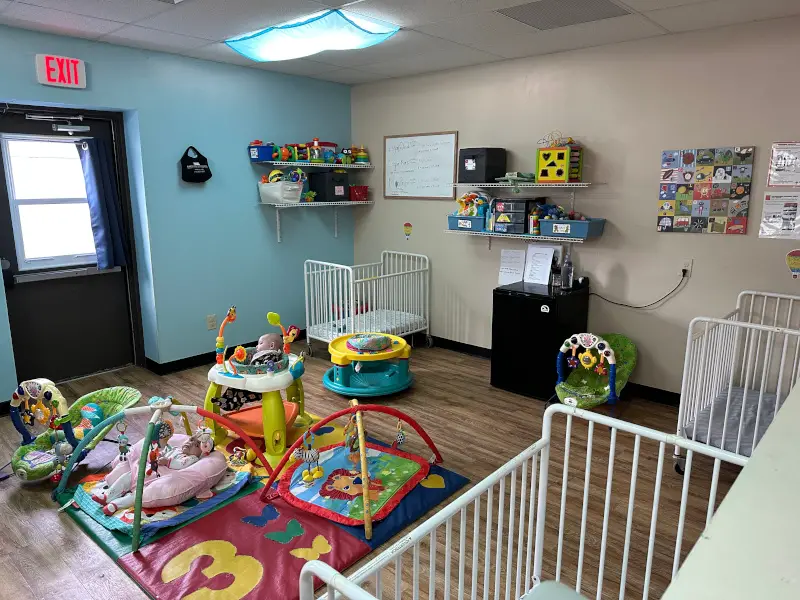
Creating comfortable zones within an infant room can enhance relaxation and play. Soft seating, cozy nooks, and plush rugs invite babies to explore and unwind.
One room beautifully showcases a soft seating area with cushions and blankets:
- Use soft materials: Plush rugs and cushions create a welcoming atmosphere.
- Designate a quiet area: This can be a space for napping or calming down.
- Incorporate sensory elements: Things like soft toys and gentle lighting can enhance comfort.
Comfort zones make the environment more inviting and help infants develop a sense of security.
Bright and Cheerful Color Schemes

Color plays a vital role in setting the mood of a room. Bright and cheerful color schemes can create an energetic atmosphere that stimulates play and learning.
One room features a vibrant palette with bold colors that pop:
- Mix and match colors: Combine contrasting colors for a fun look.
- Use accent walls: A brightly colored wall can be a focal point in the room.
- Incorporate playful patterns: Fun patterns on rugs or curtains can add visual interest.
Bright color schemes not only engage infants but also create a lively, energetic environment.
Personalized Decor

Adding personalized decor can make an infant room feel special. Items that reflect the individuality of the children can create a warm and inviting atmosphere.
One room beautifully incorporates personalized name tags and photos:
- Create a welcome wall: Display each child’s name and photo to foster a sense of belonging.
- Personalized toys: Items with the child’s name can make playtime more engaging.
- Include family photos: This can promote a sense of connection and comfort.
Personalized decor not only enhances the room’s aesthetic but also fosters emotional security for little ones.
Smart Technology Integration

In a tech-savvy world, integrating smart technology into infant rooms can enhance safety and ease for caregivers. Smart monitors, automated lighting, and temperature controls are just a few ways to bring tech into the space.
One room showcases smart devices seamlessly integrated into the decor:
- Use smart baby monitors: These allow caregivers to keep an eye on infants from anywhere.
- Incorporate automated lighting: Smart lights can adjust based on the time of day or activity.
- Utilize temperature controls: Keeping the room comfortable is essential for infants’ well-being.
Smart technology integration not only boosts safety but also makes caregiving more efficient and enjoyable.
Multi-functional Activity Spaces
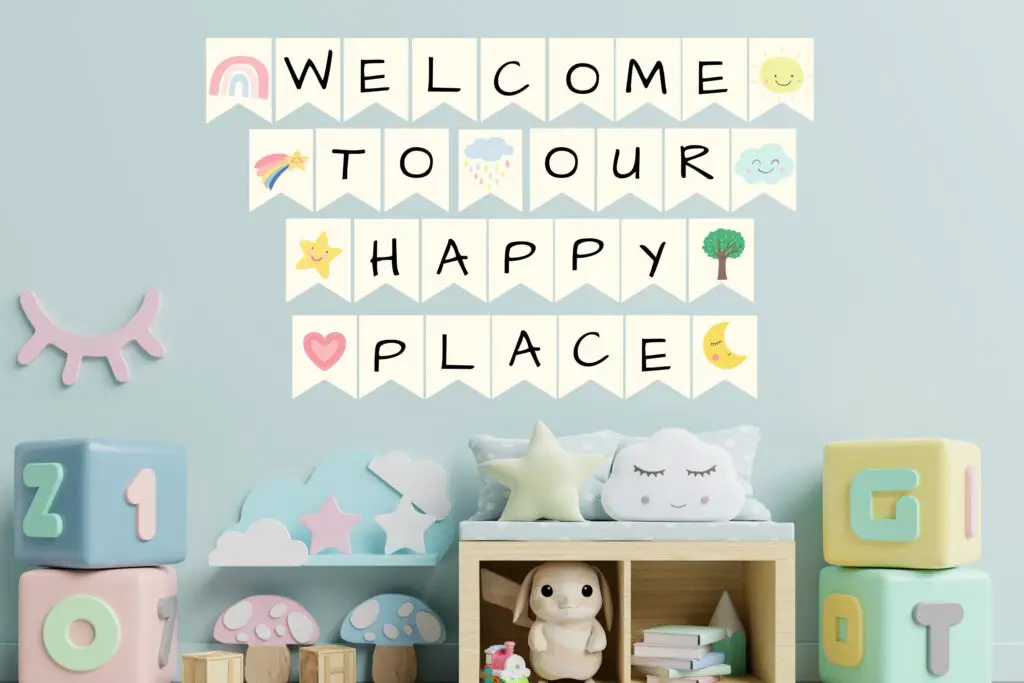
Creating multi-functional activity spaces can maximize the usability of an infant room. These areas can serve various purposes—play, learning, and relaxation—all in one.
One room beautifully demonstrates this concept with movable furniture and adaptable play areas:
- Use modular furniture: This allows for easy reconfiguration based on needs.
- Incorporate activity tables: These can be used for both play and crafts.
- Design flexible zones: Spaces that can easily switch from playtime to naptime enhance usability.
Multi-functional activity spaces are practical and offer a dynamic environment that adapts to the needs of infants and caregivers alike.
Interactive Learning Boards
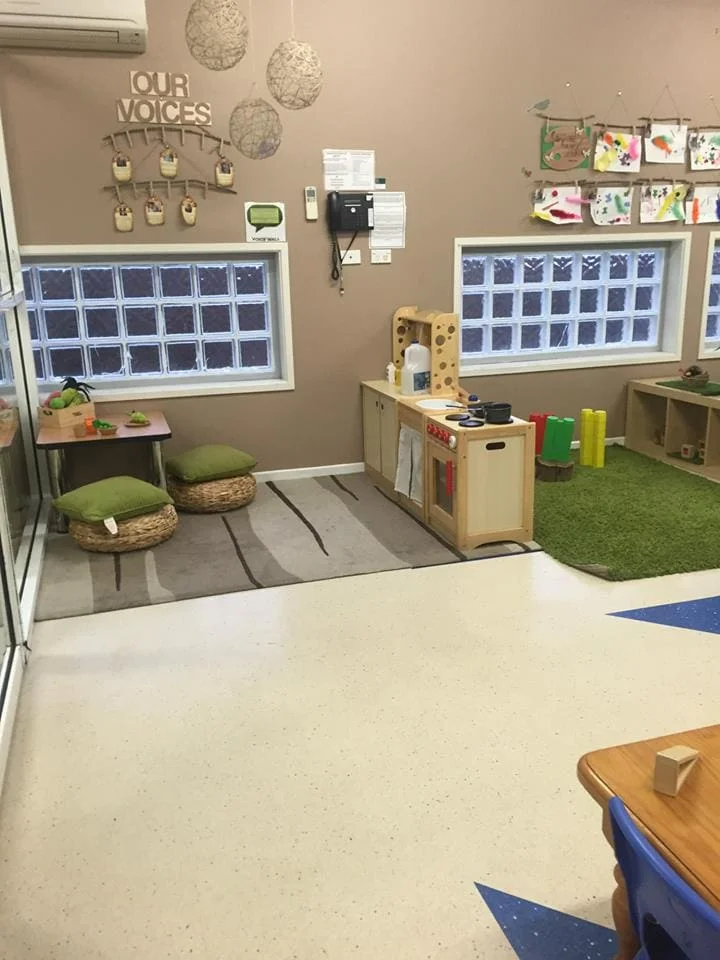
Interactive learning boards can transform a plain wall into an educational experience for infants. These boards can feature textures, shapes, and colors to engage little minds.
One room showcases an interactive wall with various sensory elements:
- Incorporate tactile materials: Textured panels can stimulate touch and curiosity.
- Feature movable parts: Interactive elements invite infants to explore and play.
- Include educational graphics: Shapes, letters, and colors can promote early learning.
Interactive learning boards not only beautify the room but also inspire cognitive development through play.
Nature-Inspired Elements
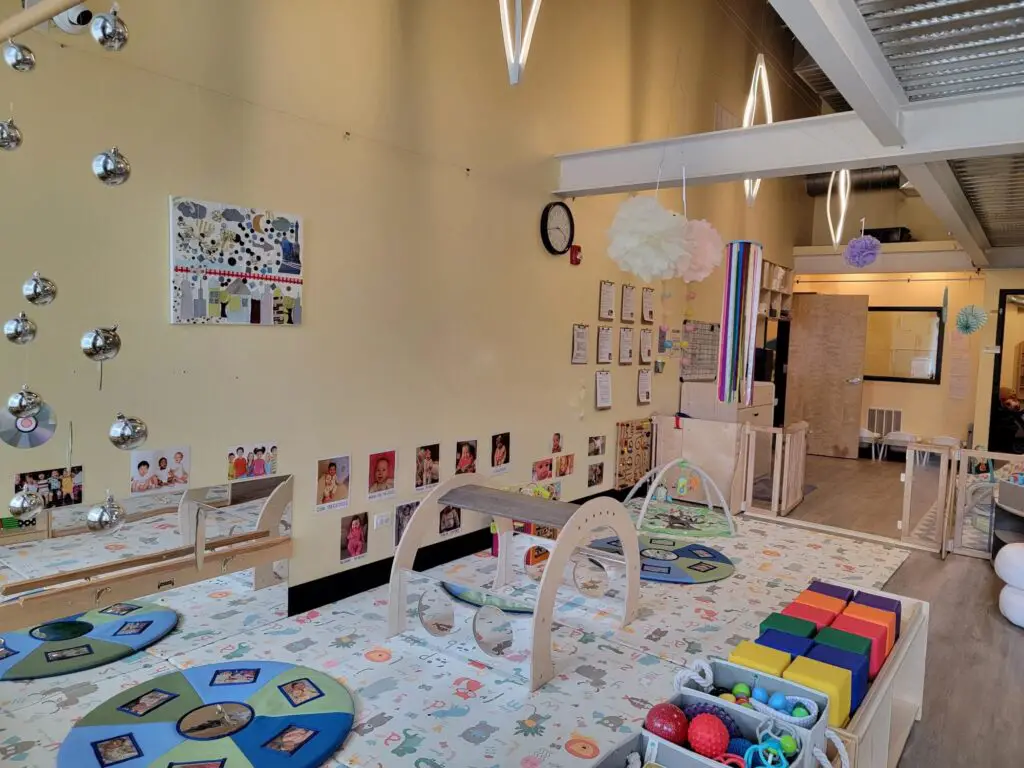
Bringing nature indoors can create a calming and nurturing environment for infants. Nature-inspired elements can range from plant decor to earthy color palettes.
One room beautifully integrates natural elements with wooden accents and greenery:
- Incorporate indoor plants: They can improve air quality and add a fresh feel.
- Use earthy tones: Soft greens and browns create a soothing atmosphere.
- Include natural light: Large windows can provide natural light and connect infants with the outdoors.
Nature-inspired elements promote a sense of tranquility and well-being, making them perfect for daycare settings.
Conclusion
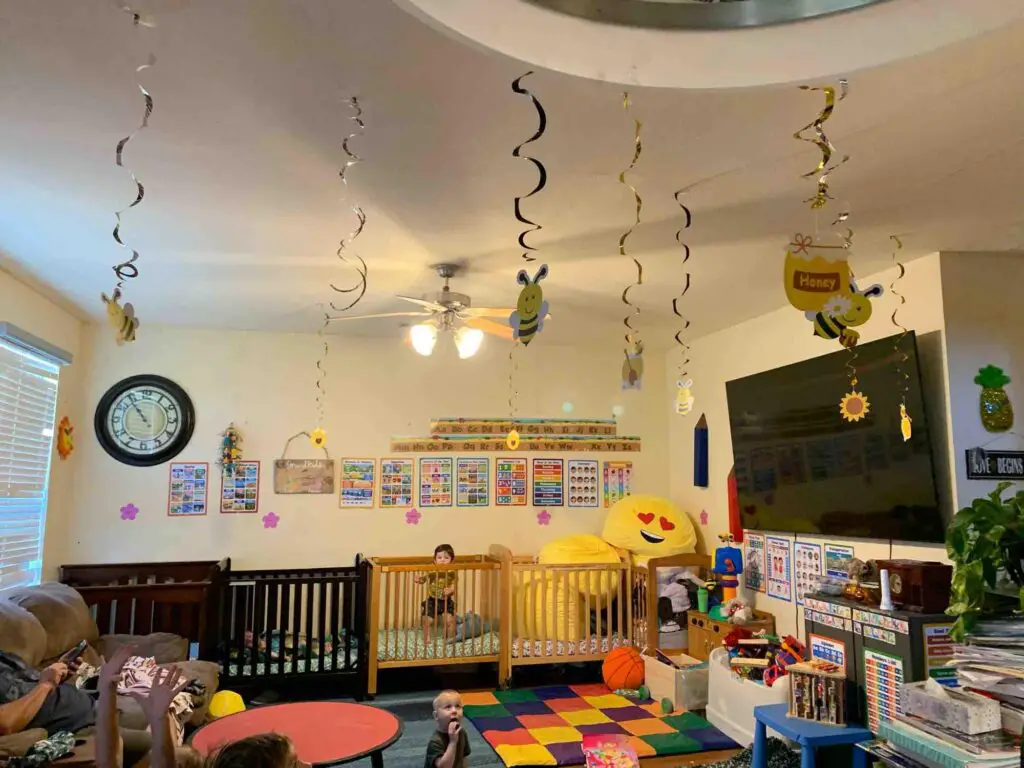
Decorating infant rooms in daycare settings is not just about style; it’s about creating environments that nurture, inspire, and engage.
From playful pastels to interactive learning spaces, the trends discussed can enhance both the aesthetic and functional aspects of these vital spaces.
Which ideas resonate with you? We’d love to hear your thoughts and see how you plan to decorate the chicest little ones’ rooms!